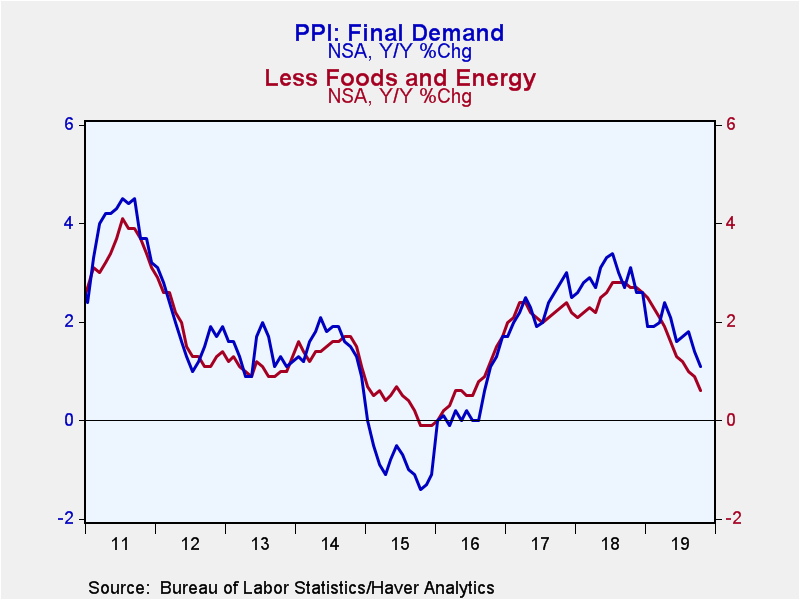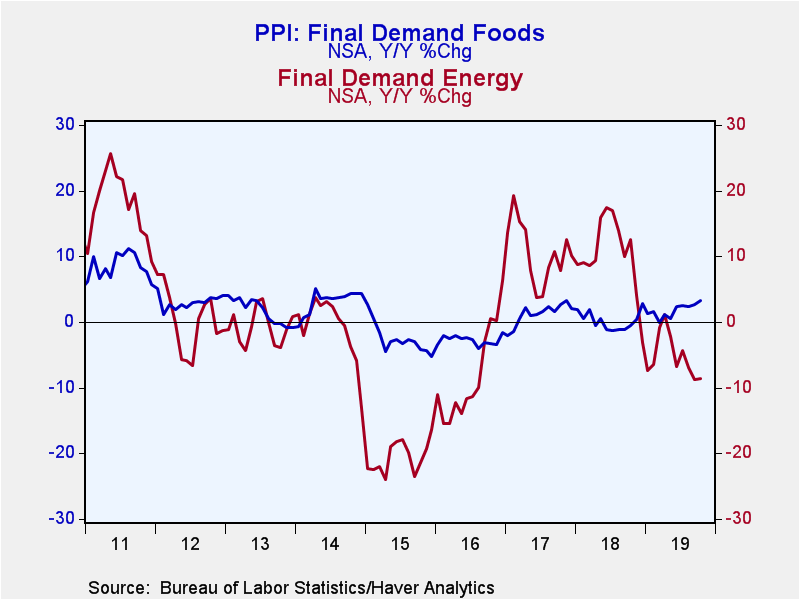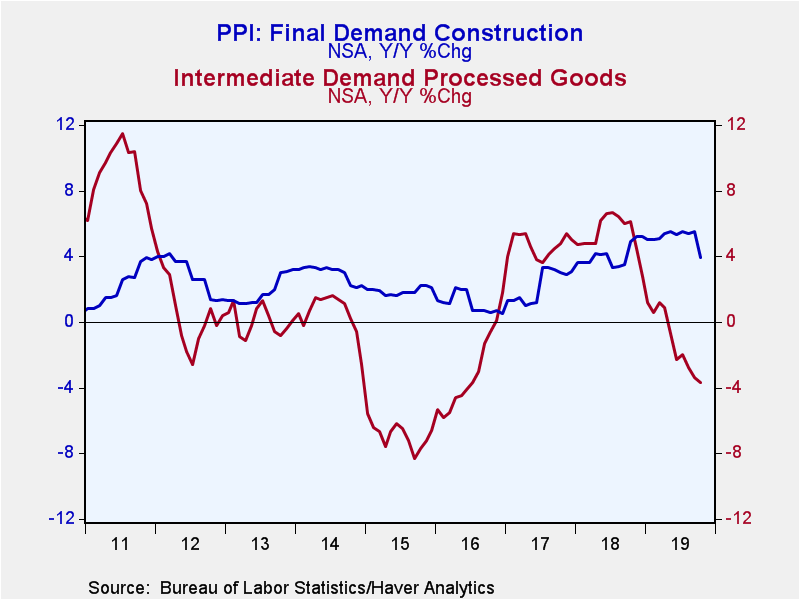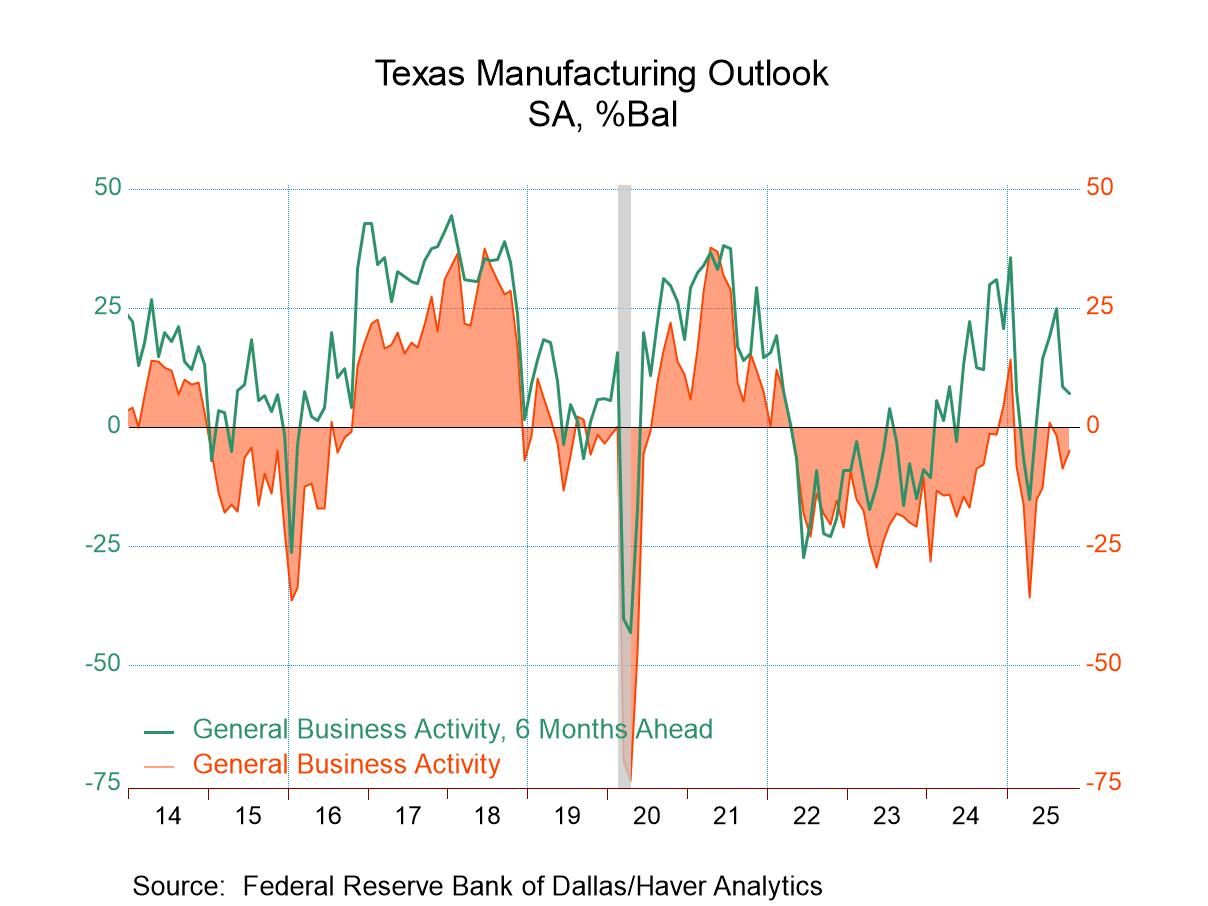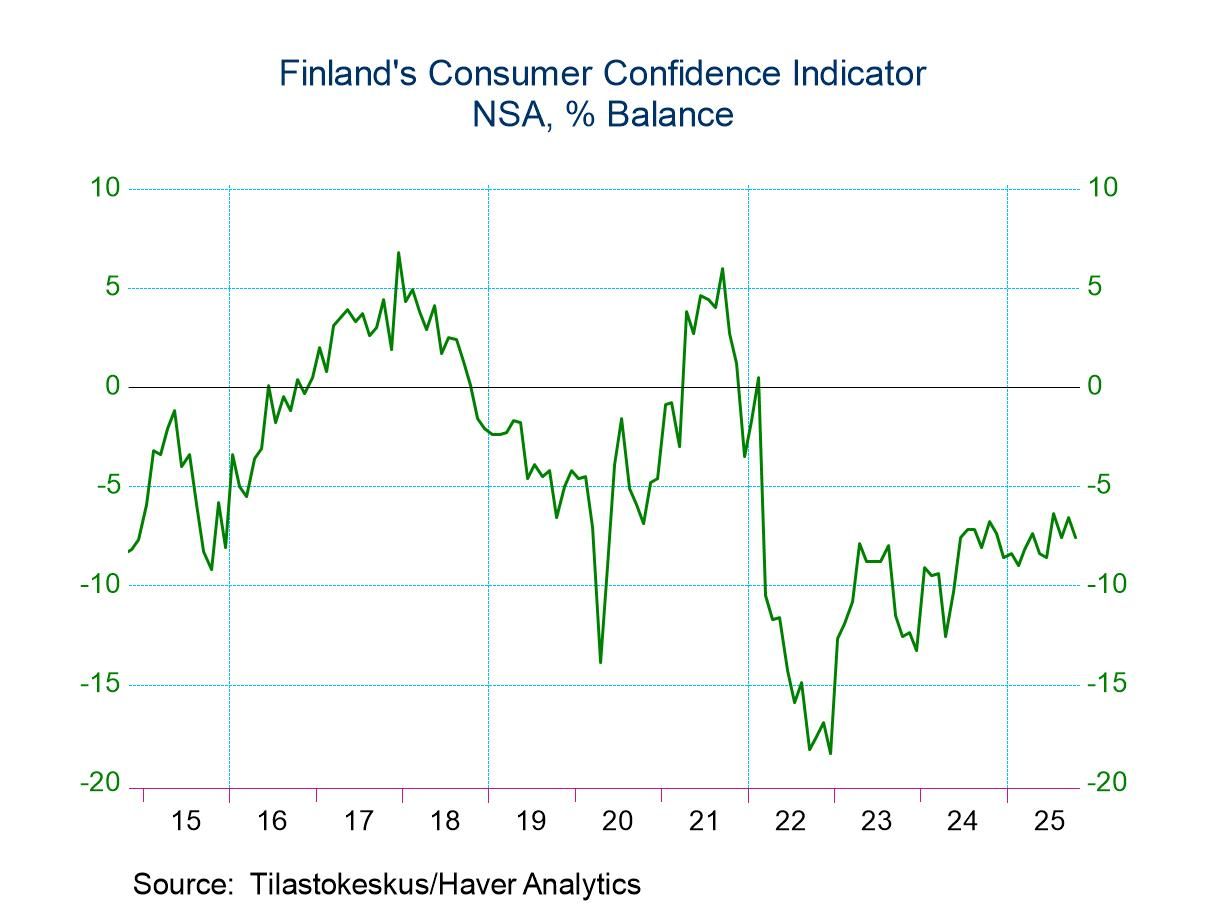 Global| Nov 14 2019
Global| Nov 14 2019U.S. Producer Prices Increase As Energy & Food Prices Strengthen
by:Tom Moeller
|in:Economy in Brief
Summary
The Producer Price Index for final demand rose 0.4% during October (1.1% y/y) and reversed the 0.3% September decline. A 0.3% gain had been expected in the Action Economics Forecast Survey. Producer prices excluding food & energy rose [...]
The Producer Price Index for final demand rose 0.4% during October (1.1% y/y) and reversed the 0.3% September decline. A 0.3% gain had been expected in the Action Economics Forecast Survey. Producer prices excluding food & energy rose 0.3% last month (1.6% y/y) after a 0.3% decline. A 0.2% rise had been expected. The PPI excluding food, beverages and trade services, another measure of underlying price inflation, edged 0.1% higher (1.5% y/y) last month after holding steady in September.
A 2.8% rebound in energy prices (-8.6% y/y) provided strength to last month's overall PPI, following four declines in the prior five months. The rise reflected a 7.3% rebound (-16.3% y/y) in gasoline prices after falling 7.2% in September. Home heating oil prices rebounded 3.3% last month (-14.4% y/y) after falling 1.3%. Adding to these increases was a 0.7% rise (2.9% y/y) in the cost of natural gas which followed a 0.4% rise. The cost of residential electric power also improved 1.3% (2.3% y/y) after a 1.8% decline.
Higher food prices also boosted the rise in the PPI overall. They jumped 1.3% in October (3.2% y/y), after a 0.3% improvement. Fresh & dried vegetable costs surged 28.6% (NSA, 27.2% y/y). Fresh fruit & melon prices increased 6.8% (1.0% y/y). Fish prices strengthened 5.7% (7.9% y/y) after a 0.9% rise while beef & veal prices increased 1.3% (4.3% y/y). The cost of dairy products edged 0.2% higher (5.0% y/y) following two straight months of 0.7% decline. Offsetting these increases was a 20.7% decline (NSA, -33.2% y/y) in egg prices.
Prices for core goods for final demand held steady (0.6% y/y) after easing 0.1% in September. Core finished consumer goods prices rose 0.1% (1.6% y/y) for the third time in the last four months. Core nondurable consumer goods costs improved 0.2% and the y/y change fell sharply to 2.2%, down from a high of 3.8% in September of last year. Durable consumer goods prices declined 0.2% (+0.8% y/y) after slipping 0.1%. Passenger car prices weakened 1.5% (+0.2% y/y) but appliance prices rose 0.9% (NSA, 3.0% y/y). Private capital equipment costs eased 0.1% (+1.5% y/y) after holding steady in September. Government goods prices less food & energy also were unchanged (1.3% y/y) after a 0.1% slip.
Services prices strengthened 0.3% (2.0% y/y) after declining 0.2%. Trade services prices surged 0.8% (2.2% y/y) and recovered most of September's weakening. The cost of trade of finished goods improved 0.8% (2.1% y/y). Passenger transportation fees rose 0.5% (1.4% y/y) after a 2.5% decline. Transportation & warehousing costs improved 0.2% both m/m and y/y (+0.6% y/y) after two months of decline. Services prices less trade, transportation & warehousing edged 0.1% higher (1.9% y/y) following two months of strong increase.
Construction costs strengthened 0.4% but the y/y increase weakened significantly to 3.9%. Private building costs gained 0.4% (3.9% y/y) and government building costs rose 0.3% (4.0% y/y).
Prices for intermediate demand rose 0.4% (-3.7% y/y) following two months of decline.
The PPI data can be found in Haver's USECON database. Further detail can be found in PPI and PPIR. The expectations figures are available in the AS1REPNA database.
The Federal Reserve's Review of Its Monetary Policy Strategy, Tools, and Communication Practices is the title of today's speech by Fed Vice Chair Richard H. Clarida. It is available here.
| Producer Price Index (SA, %) | Oct | Sep | Aug | Oct Y/Y | 2018 | 2017 | 2016 |
|---|---|---|---|---|---|---|---|
| Final Demand | 0.4 | -0.3 | 0.1 | 1.1 | 2.9 | 2.3 | 0.4 |
| Excluding Food & Energy | 0.3 | -0.3 | 0.3 | 1.6 | 2.6 | 1.9 | 1.2 |
| Excluding Food, Energy & Trade Services | 0.1 | 0.0 | 0.4 | 1.5 | 2.8 | 2.1 | 1.2 |
| Goods | 0.7 | -0.4 | -0.5 | -0.6 | 3.4 | 3.3 | -1.4 |
| Foods | 1.3 | 0.3 | -0.6 | 3.2 | 0.2 | 1.2 | -2.8 |
| Energy | 2.8 | -2.5 | -2.5 | -8.6 | 10.2 | 10.4 | -8.4 |
| Goods Excluding Food & Energy | 0.0 | -0.1 | 0.0 | 0.6 | 2.5 | 2.2 | 0.7 |
| Services | 0.3 | -0.2 | 0.3 | 2.0 | 2.6 | 1.8 | 1.4 |
| Trade Services | 0.8 | -1.0 | 0.2 | 2.2 | 1.8 | 1.4 | 1.3 |
| Construction | 0.4 | 0.1 | 0.1 | 3.9 | 4.0 | 2.2 | 1.1 |
| Intermediate Demand - Processed Goods | 0.4 | -0.4 | -0.7 | -3.7 | 5.3 | 4.7 | -3.1 |
Tom Moeller
AuthorMore in Author Profile »Prior to joining Haver Analytics in 2000, Mr. Moeller worked as the Economist at Chancellor Capital Management from 1985 to 1999. There, he developed comprehensive economic forecasts and interpreted economic data for equity and fixed income portfolio managers. Also at Chancellor, Mr. Moeller worked as an equity analyst and was responsible for researching and rating companies in the economically sensitive automobile and housing industries for investment in Chancellor’s equity portfolio. Prior to joining Chancellor, Mr. Moeller was an Economist at Citibank from 1979 to 1984. He also analyzed pricing behavior in the metals industry for the Council on Wage and Price Stability in Washington, D.C. In 1999, Mr. Moeller received the award for most accurate forecast from the Forecasters' Club of New York. From 1990 to 1992 he was President of the New York Association for Business Economists. Mr. Moeller earned an M.B.A. in Finance from Fordham University, where he graduated in 1987. He holds a Bachelor of Arts in Economics from George Washington University.


